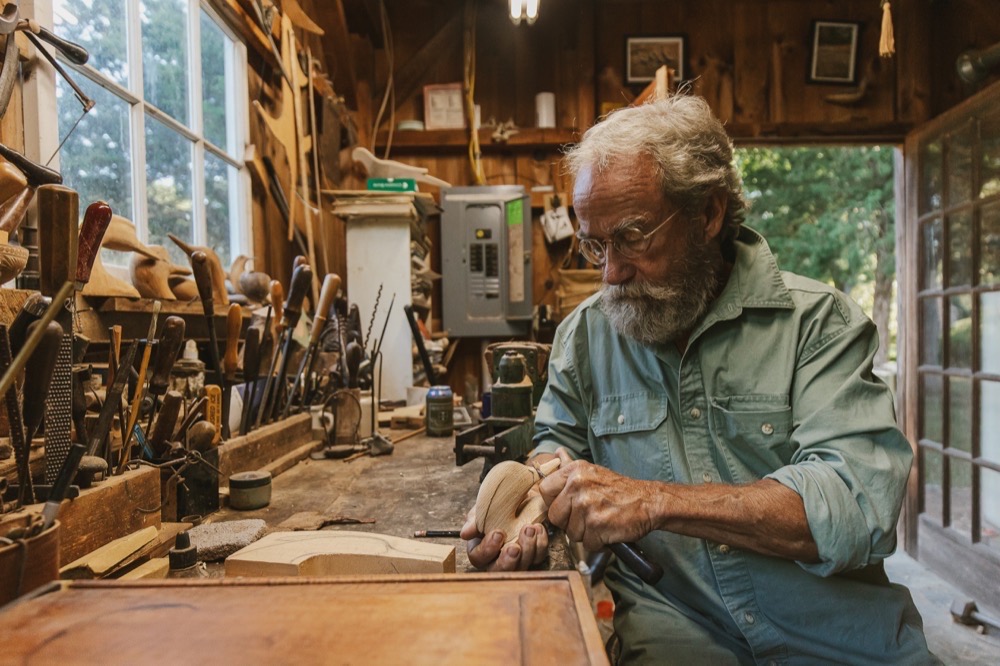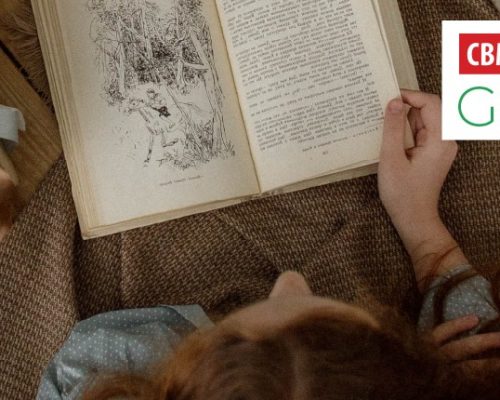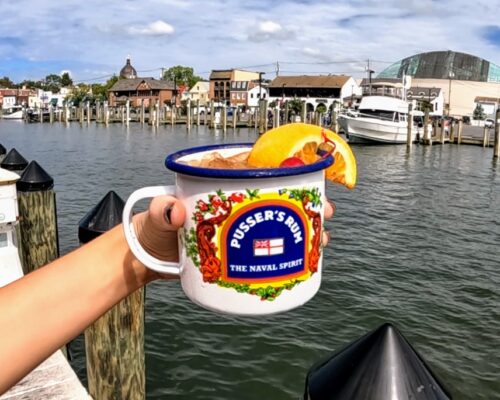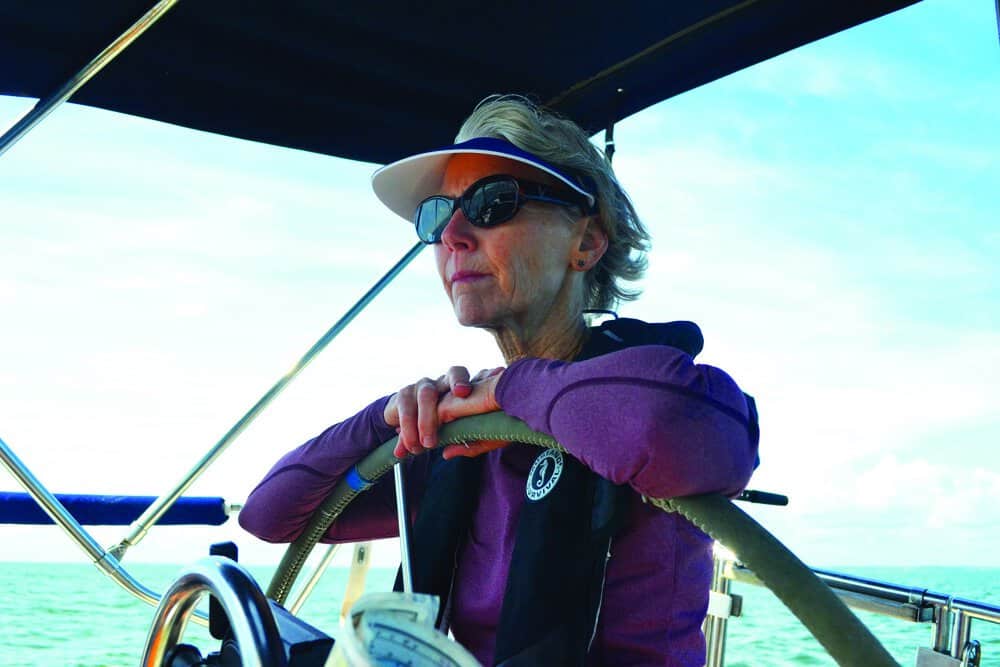The McNairs of Virginia’s Eastern Shore make decoys a family tradition
For decoy carvers, inside every block of wood there is a bird. What kind of bird, its attitude and plumage, a diver or a shorebird, can all be known as the wood is carved away. On the Chesapeake, this act of discovery is an old and traditional one. For over 300 years, sturdy canvasbacks and redheads, mallards and mergansers have revealed themselves to the drawknife as decoy artisans shaped the wood into tools designed to lure waterfowl from the sky to shotgun range. Historically, these are rough-and-ready working decoys, V-bottomed to ride the waves and just lifelike enough to suggest the birds they represent. Arranged by the dozens on the water or in a field and accompanied by a corresponding call, decoys were an essential part of any waterfowler’s rig. Art is not the purpose of a good decoy—though it is sometimes a happy byproduct. Functionality is.
All of this is why Mark McNair’s decoys are so remarkable. Fluid with elements of abstraction, suggestive of the notion of a bird rather than a perfect picture, they are revelations. Like a flashcard, a McNair bird instantly telegraphs information, a story.
For almost 50 years, McNair has carved nontraditional decoys that are highly appealing and sought after. And the journey that brought him to decoy carving is as unconventional as his carving style. Whereas most Chesapeake carvers are waterfowlers themselves, informed by the movement and habits of birds in the landscape, McNair was an art-school graduate with a flair for woodworking. He was not taught his methods by a more seasoned carver, echoing their techniques and influence. Instead, he saw an early decoy and was struck by its simplicity and symmetry. Looking at it from above, he thought it looked like an African mask, and he wanted to try it for himself. The next day McNair woke up and started carving.
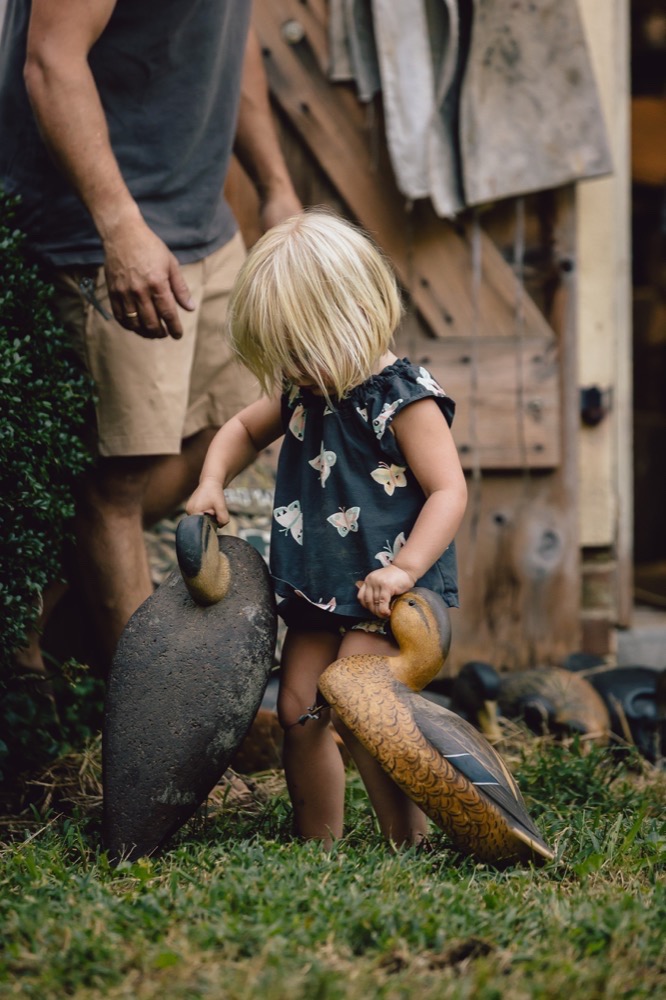
Since then, there have been thousands of decoys crafted in his workshops from Rhode Island to Virginia, each with that stripped-down, sculptural essence. McNair sees no end in sight. “I’ve just been turned onto it, ever since then,” McNair says. “It’s never-ending. I don’t do the same thing, over and over, unless I’m working something out. It’s always different. So here I am, almost 50 years later, and it’s still as interesting and challenging as I want to make it.”
McNair has largely focused on what’s known as a mantel bird—a decoy created as art rather than as a working tool. (Early on, he did once carve a full rig of 100 working bluebill decoys for $6.50 apiece. His pricing has changed a bit since then.) Mantel birds often trend towards hyperrealism, with every single feather perfectly distinct and articulated. For carvers working in this art form, no truth is more sublime than to devotedly recreate nature. This is where McNair’s divergent approach truly shines, in work that possesses a bold leap of the imagination that transforms craft to art.
“I look for patterns,” McNair says. “When you hold a bird in your hand, you don’t see one black and white feather, you see one on another on another on another, which creates this graphic impression. It’s that impression—a black and white bird—and an action—swimming, preening, diving. I think, how can I interpret that movement? I want to make a wonderful, interesting design, not a copy.”
The singularity of McNair’s work speaks to his inspiration: indigenous art, folk art, and hours spent as a boy wandering around the halls of the Metropolitan Museum of Art in New York. But it also draws on a deep sense of place. McNair, his wife Martha, and their family have lived on a farm in Craddockville on Virginia’s Eastern Shore for more than 40 years. Their part of the Chesapeake is so wide you can’t see the Western Shore on the other side, and so salty they grow oysters on a private lease a few yards from their dock. It’s also teeming with birds. An important annual stopover point on the Atlantic Flyway for migrating birds, buffleheads and coots and sanderlings, pelicans and loons and green herons, jinglers and owls and scoters all make an appearance in the big water and salt marshes of the lower Eastern Shore. All have been a source of wonderment and imagination for McNair, and have been captured in his work, graceful and full of spirit.
The swamps and little creeks of his Bayside property speak to McNair’s creativity and serve up an endless source of fresh ideas. And for his two sons, Colin and Ian, dipping up blue crabs off the dock pilings or camping in the loblollies on the little island just across the creek, it was a Huckleberry Finn childhood wonderland. Naturally, the workshop of their father, Mark, was an extension of their free-range habitat. One of Ian’s earliest memories is playing on his father’s workbench in a little old studio on the property, crawling over the tools and pulling out the drawers to look inside. As the boys got older, Mark welcomed each into the workshop, showing them how to use simple tools and work with wood in the same way his own father had. One of Ian’s first words was “spokeshave” (a wood-smoothing tool pronounced “puptave”).
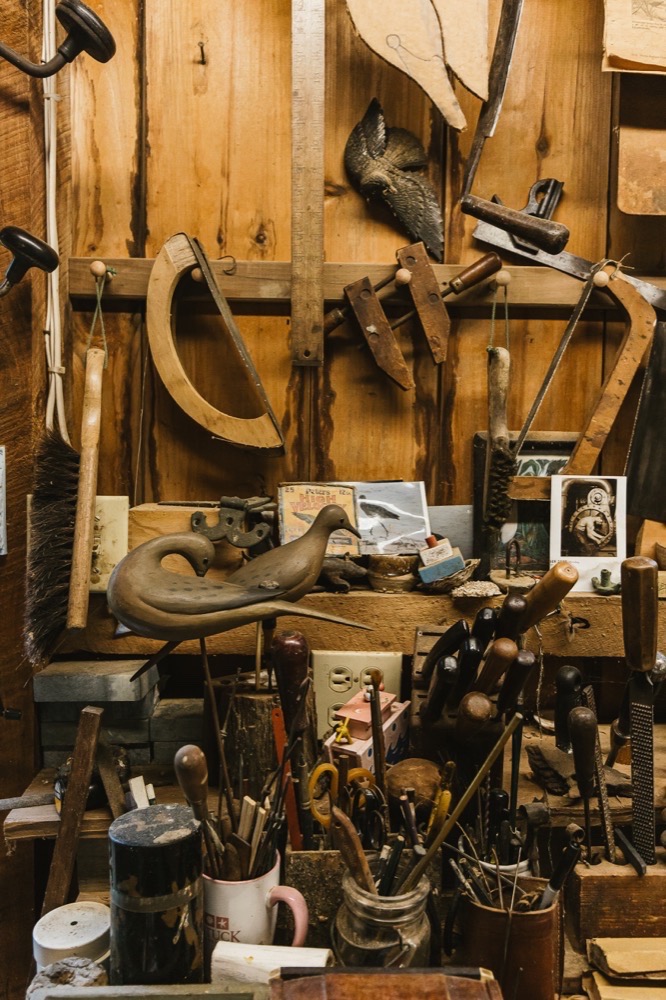
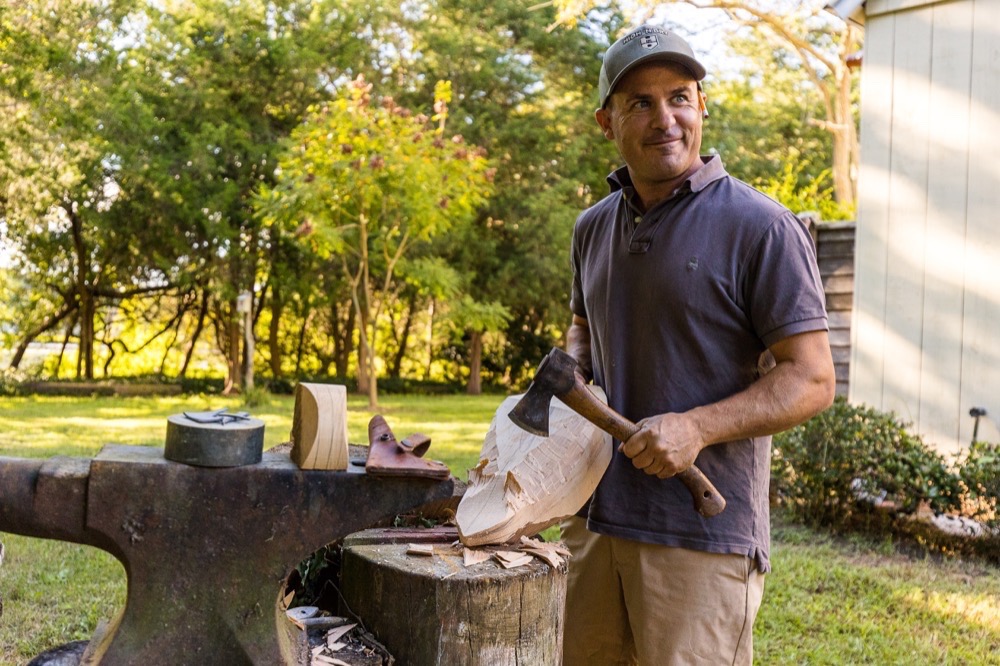
roughing out a decoy
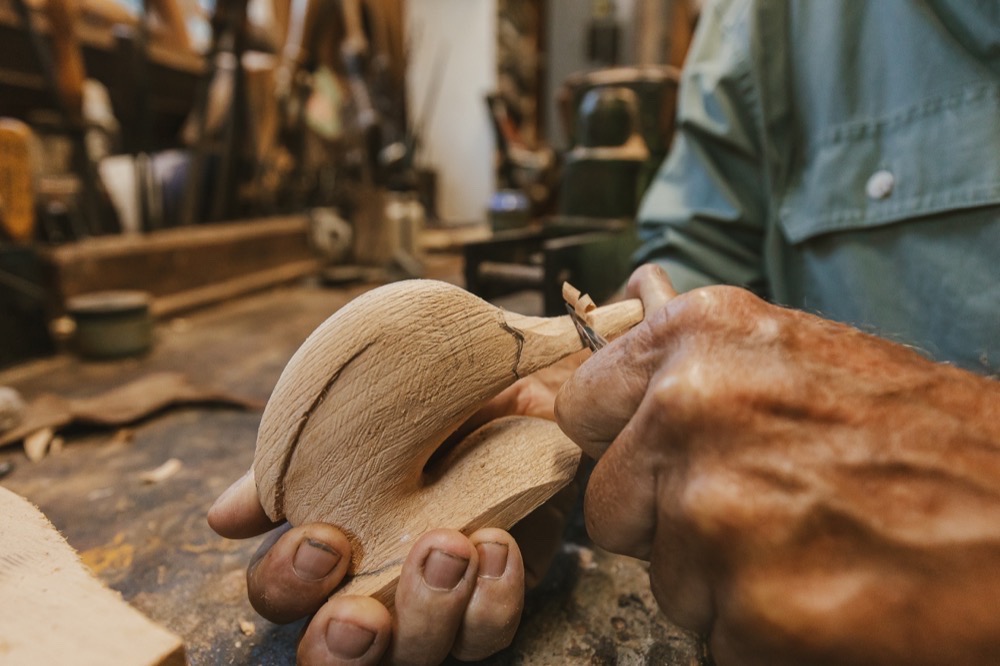
Colin and Ian would become carvers too, although unlike Mark, their inspiration was not solely cerebral or visual—it was also practical. The McNair sons had grown up in the vibrant winter marshes of the ESVA, where fishing and waterfowling was practically a birthright. Early on, they started carving little wooden fish figurines. (Ian was admittedly obsessed by fish and fishing as a kid, drawing pictures of one fish eating another eating another to infinity.) Later on, as a teenager, Ian wanted a rig of his own decoys, and in true McNair fashion it never occurred to him to buy them. “I was fifteen years old when I first started duck hunting,” Ian said, “but I didn’t have any duck decoys to hunt with. So we just made them. Papa helped me make them out of cork, and they looked great on the water. For me, it was a totally natural transition from duck hunting into carving ducks.”
Sharing workshop space, over the next 20 years the three McNairs each produced a wide spectrum of carved decoys, from waterfowl to whales (as Mark McNair’s website puts it, “more than ducks”). Mark continued to refine his signature gestural style in full-sized bird decoys, miniatures, and fish carvings, while Ian focused on working decoys and mantel birds. Colin almost solely worked on smooth, stylized wooden fish carvings.
As the McNair sons went on to college and careers afterwards, they continued to carve, sometimes exhibiting their work alongside their father’s in decoy shows and art galleries along the East Coast. Colin would go on to become a decoy expert and historian, working today for Copley Fine Art Auctions, while Ian was drawn into carving again as he married and settled down in Virginia with his wife, Becca, and eldest daughter, Esme. But it wasn’t long before the Eastern Shore started to call him back.
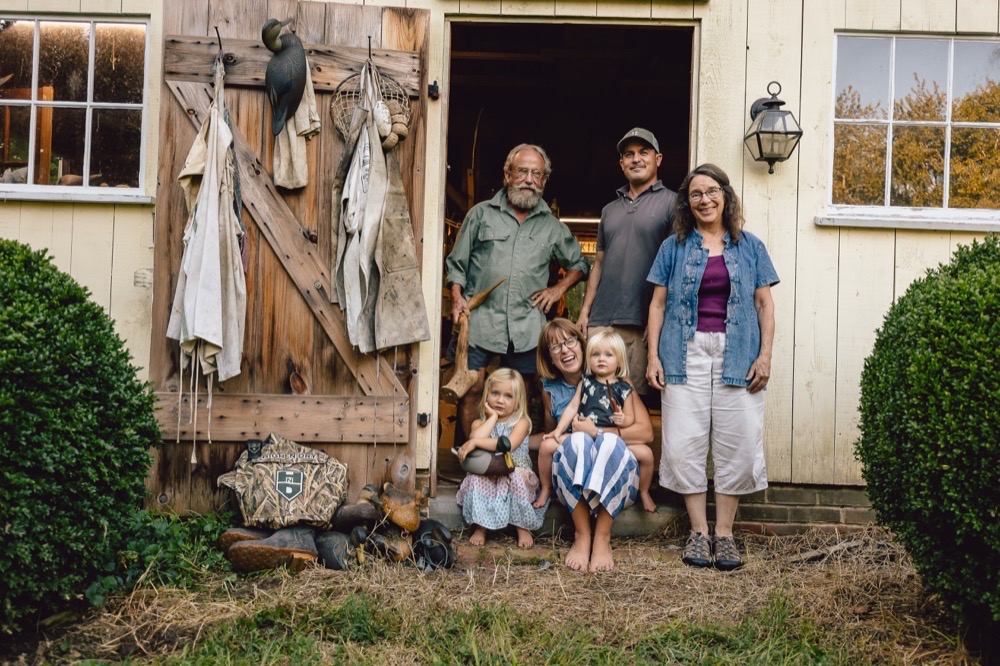
“I love to travel, but the Eastern Shore has always felt like home base to me—it’s kind of hard to beat. So it was something we always knew we wanted to do, and once Becca and I had Esme, it felt like the timing was right.” In his 30s, Ian had doubled down on his love of waterfowling and working on the water by launching a wader business, High ’N Dry, and saw the potential in basing his operations out of the most inspirational place he could think of, Virginia’s Eastern Shore. It would mean bringing together his great loves: his family (which has grown to include daughter Imogen), his carving, his business, and his passion for the Shore. A no-brainer. They moved two years ago and haven’t looked back since.
There’s a circle of time on the Eastern Shore, one that feels immutable, transparent, and driven by the seasons. It’s what drew Mark McNair here on a trip in the ’70s, brought him back with his family in the ’80s to work and carve, what shaped his sons in the ’90s, and now, in the 21st century, what has brought the next generation home. Ian and Mark now welcome Ian’s two little girls into their shop, offering them a try at the spokeshave and words of encouragement. Soon, they might be roughing out heads or bodies.
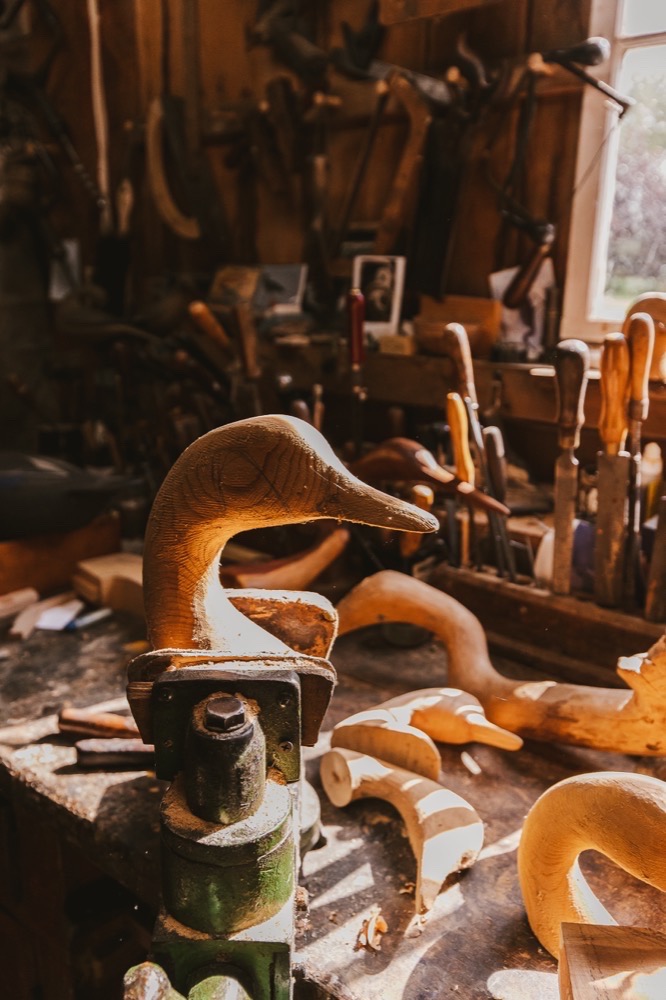
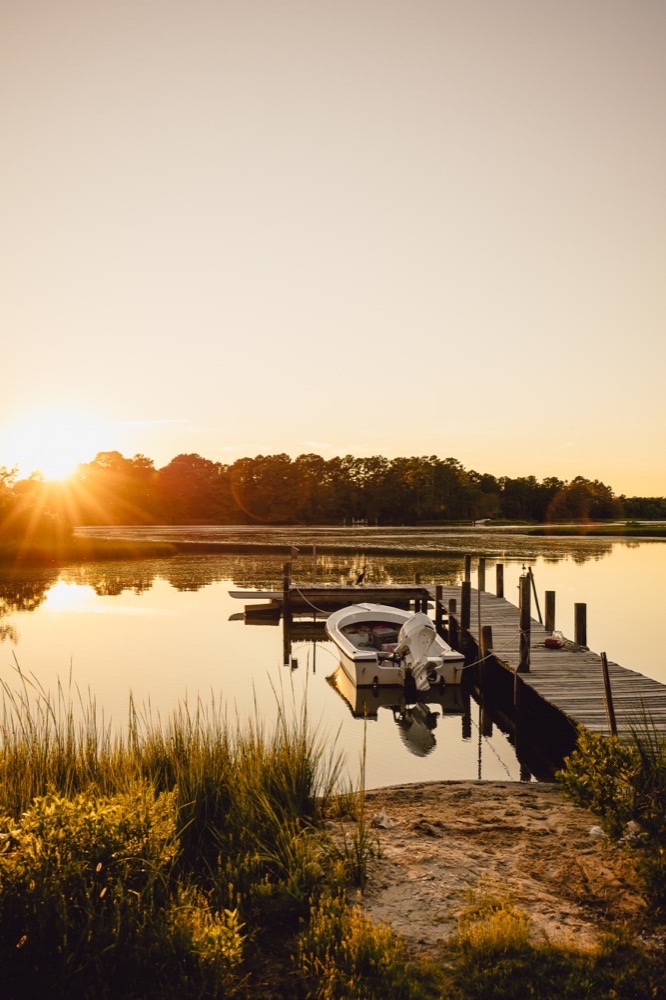
Bayside property serves as a font of ideas.
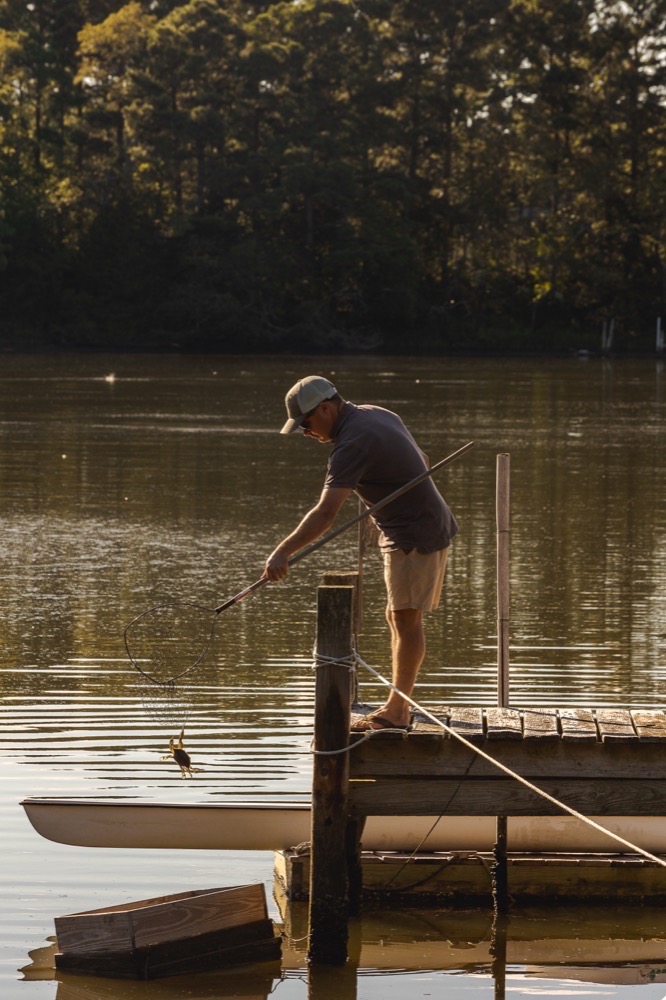
the dock
Mark never set out to create a legacy, but here he is, surrounded by a family of carvers. “Carving just seemed like a natural thing to do. I had no idea that Colin would be interested in it, or Ian would be interested in it. Looking back, I feel so thankful that I started, all those years ago.”
“And I’m still enthusiastic about it, Mark says. “I’m watching the teals and osprey in our marsh all the time, always seeing new behaviors and things I never noticed before. I’m a pretty lucky guy, to be doing something for 50 years and waking up feeling like I still haven’t made my last bird.”

